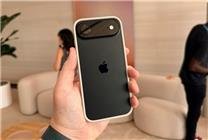### Summary:
– Apple has announced a delay for the iPhone Air due to regulatory approval issues and limited initial stock.
– The iPhone 17 series has quickly sold out, leading to delays in shipment times.
– The iPhone Air features advanced technology but faces challenges with eSIM activation.
—
The recent launch of Apple’s iPhone 17 series—including the iPhone 17, iPhone 17 Pro, and iPhone 17 Pro Max—has seen overwhelming demand, leading to rapid sell-outs following pre-orders on September 12. Users are now faced with delayed shipment times that have been pushed back to mid-October. However, the highly anticipated iPhone Air, touted as a lightweight flagship, has faced an unexpected setback, with its release now postponed.
According to updates from Apple, the iPhone Air was initially slated for launch on September 19, but this timeline has now shifted to “subsequent updates on release information.” The exact launch date remains uncertain, leaving potential buyers in anticipation.
In a statement, Apple clarified that the iPhone Air is currently awaiting regulatory approval, and the company is collaborating closely with relevant authorities to expedite its launch in China. This situation resonates with earlier speculations from industry insiders, suggesting that Apple’s conservative expectations for the iPhone Air’s market introduction led to an initial stock allocation constituting only 10% of total production. This limited inventory is insufficient for a simultaneous market launch.
For comparison, allocations for the iPhone 17 were set at 25%, both for the iPhone 17 Pro and the iPhone 17 Pro Max at 40%. Such miscalculations regarding expected demand mean that even once regulatory approval is secured, the mismatch in inventory will pose challenges in meeting consumer needs, which is a key factor in the delay of the iPhone Air.
As Apple’s slimmest device to date, the iPhone Air boasts an impressive thickness of just 5.6mm and a weight of 165g. Constructed with aviation-grade aluminum alloy and second-generation super porcelain crystal glass, its design emphasizes durability—yielding three times improved scratch resistance. The phone features a 6.5-inch OLED display with a 120Hz adaptive refresh rate and a peak brightness of 2000 nits, ensuring a balance between display performance and power efficiency.
On the performance front, the iPhone Air is powered by the A19 Pro chip—shared with the Pro series—which enhances AI tasks through its dedicated neural engine. Its imaging capabilities include a 48-megapixel main camera that employs pixel aggregation technology to achieve a 2x optical zoom effect, complemented by an 18-megapixel front camera featuring the Center Stage function that can automatically adjust to keep subjects in focus during video calls. Despite having the smallest battery in the lineup, silicon anode technology enables an impressive video playback time of 27 hours along with support for 20W wired fast charging and 20W MagSafe wireless charging.
It is crucial to note that the iPhone Air exclusively supports eSIM activation. Users will need to visit their mobile operators’ physical stores to complete the necessary procedures. Apple’s website clearly states that domestic models will only support local eSIM services, with specific packages needing confirmation from respective operators. This stipulation means that even after the product launches, user experience may remain contingent on network providers’ unrolling of services.
Industry experts speculate that if the eSIM approval process functions without hitches, pre-orders for the iPhone Air could begin in mid-to-late October. However, supply shortages due to limited initial stocking may result in constrained availability during the first sales period.
In conclusion, while the iPhone 17 series has enjoyed a successful launch, the delay of the iPhone Air highlights the complexities involved in new product releases, particularly in relation to regulatory compliance and logistical readiness. As consumers await further updates, the anticipation for the iPhone Air continues to build, underscoring Apple’s pivotal role in the smartphone market.






